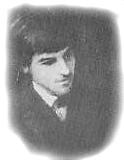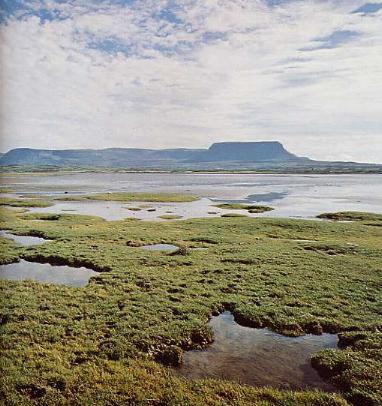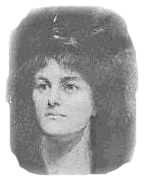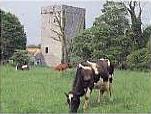| |
|
|
(13th June 1865-28th January
1939) William Butler
Yeats an Irish poet and dramatist, won the 1923
Nobel Prize for literature. Many critics consider him the greatest
poet of his time. Yeats led the Irish Literary Revival, a movement
of the late 1800's and early 1900's that stimulated new appreciation
of traditional Irish literature. The movement also encouraged the
creation of works written in the spirit of Irish culture. dramatist, won the 1923
Nobel Prize for literature. Many critics consider him the greatest
poet of his time. Yeats led the Irish Literary Revival, a movement
of the late 1800's and early 1900's that stimulated new appreciation
of traditional Irish literature. The movement also encouraged the
creation of works written in the spirit of Irish culture.
Yeats developed
elaborate theories about history as a recurring cycle of events.
He expressed his personal views about history and life through the
use of old Irish tales and the facts and legends of Irish history.
His views also reflect his belief in the supernatural. Yeats published
his theories in A Vision (1925), a book that is useful as a guide
to some of his more difficult poems.
Yeats was born in Dublin and lived in London for part of his childhood. He spent many holidays
in Sligo, a county in western Ireland that he loved and often wrote
about. In 1898, he joined the authors Lady
Gregory and Edward Martyn in establishing the Irish Literary
Theater. It was reorganized in 1904 as the Abbey Theater, which
became world famous.
and lived in London for part of his childhood. He spent many holidays
in Sligo, a county in western Ireland that he loved and often wrote
about. In 1898, he joined the authors Lady
Gregory and Edward Martyn in establishing the Irish Literary
Theater. It was reorganized in 1904 as the Abbey Theater, which
became world famous. 
The Irish Literary Theater was
founded partly to support Irish nationalism by encouraging the writing
and production of plays about Irish life. The theater performed
most of Yeats's 26 plays, and he served until his death as one of
the directors who managed the institution. The
theaters first production was Yeats's The Countess Cathleen, written
in 1891. This play was inspired in part by the author's love for
Maud Gonne, a beautiful Irish nationalist leader. She became
the subject of many of his plays and love lyrics.
|
Yeats's verse, unlike that of most
poets, improved as he grew older. After his marriage in 1917 to Georgie
Hyde-Lees, the couple moved into a Tower House
'Thoor Ballylee' in County Galway. He wrote much of his best work
in the last 10 years of his life. He was awarded the Nobel Prize for literature
in 1923. His most important works were published in Collected Plays (1952)
and The Poems: A New Edition (1984). Memoirs, containing autobiographical
writings, was published in 1973.
It is the contention of some that after Ireland's independence Yeats became disillusioned with the
development of the state, he as a Protestant although for many years actively
involved in the Celtic Revival, found himself alienated and distanced
by a government anxious to promote Ireland as a monolithic Catholic society,
freed from the shackles of English Protestant oppression. He moved to
France and died in Roquebrune, on January 28 1939, his remains were brought
back form France on an Irish naval vessel in 1948 and interred in Drumcliff
Churchyard where his grandfather had been vicar between the year's 1811-46.
that after Ireland's independence Yeats became disillusioned with the
development of the state, he as a Protestant although for many years actively
involved in the Celtic Revival, found himself alienated and distanced
by a government anxious to promote Ireland as a monolithic Catholic society,
freed from the shackles of English Protestant oppression. He moved to
France and died in Roquebrune, on January 28 1939, his remains were brought
back form France on an Irish naval vessel in 1948 and interred in Drumcliff
Churchyard where his grandfather had been vicar between the year's 1811-46.
|
|

 dramatist, won the 1923
Nobel Prize for literature. Many critics consider him the greatest
poet of his time. Yeats led the Irish Literary Revival, a movement
of the late 1800's and early 1900's that stimulated new appreciation
of traditional Irish literature. The movement also encouraged the
creation of works written in the spirit of Irish culture.
dramatist, won the 1923
Nobel Prize for literature. Many critics consider him the greatest
poet of his time. Yeats led the Irish Literary Revival, a movement
of the late 1800's and early 1900's that stimulated new appreciation
of traditional Irish literature. The movement also encouraged the
creation of works written in the spirit of Irish culture.  and lived in London for part of his childhood. He spent many holidays
in Sligo, a county in western Ireland that he loved and often wrote
about. In 1898, he joined the authors
and lived in London for part of his childhood. He spent many holidays
in Sligo, a county in western Ireland that he loved and often wrote
about. In 1898, he joined the authors 
